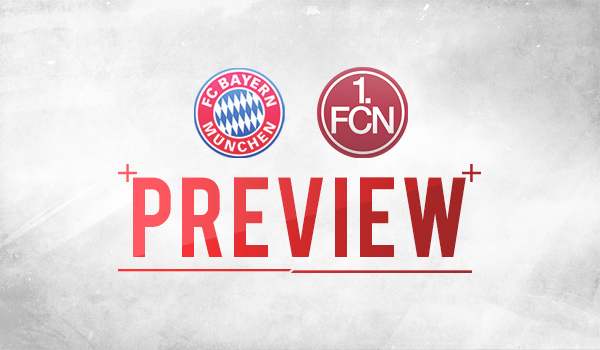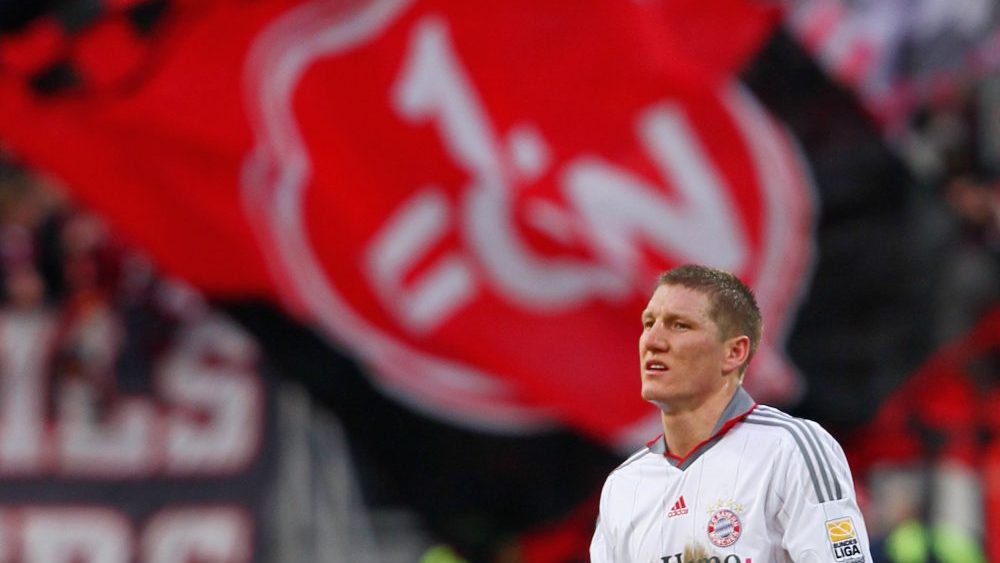Preview: FC Bayern München – 1. FC Nürnberg
The potential danger of the current situation lies in the fact that it’s too early to definitively say we’re back. Much like the crisis did not have just one cause, things are not suddenly perfect now. It’s the mixture of many circumstances that makes Bayern fans more relaxed this week.
One such factor is that the most recent opposition have allowed FC Bayern to get into their combination play. There were only a few phases of high pressure which rarely put the back line of the record champion under pressure. The initial passes and combination play had a higher success rate.
However, it is not only the weak opponents who make the FCB shine for a short time. The coach’s decision to let Kimmich and Goretzka play as a double six improved the structure enormously in the second third. The next step must now be to refine the offensive game.

The Cruyff diamond as a dream
And yet one has to state that Kovač has finally changed something that goes beyond personnel changes. The double six has brought about an upswing in the short term. If Thiago returns completely, the coach will have even more options.
He will probably push Kimmich back into the right flank and try Thiago together with Goretzka. Theoretically this would make sense. Another option would be the midfield diamond. With Thiago on the six, Kimmich and Goretzka in the half positions and James or Müller behind the attackers, Kovač would have a strong axis, which could relieve the dependence on the wings.
Remember the Cruyff diamond in the 3-1-2-1-3. For Kovač these are probably too many experiments, but at least as a concept this option makes sense. Bayern could regain more control in the second third and minimize ball losses in the center.
Long passes into the half space
Under Niko Kovač this season, FC Bayern has often tried to play long flat passes into the half space of the attacking third. This means that either the central defender or the deeper six must play very long distances. At the beginning of the season it worked really well. The two high eights offered a starting position and were at the same time directly surrounded by at least two players (a striker and wing player).
This created immediate pressure on the opponent’s defensive chain and usually one or two options for a follow-up action. With sporadic positioning, however, the opposing teams increasingly managed to intercept these risky passes or to cause inaccuracies from the passer. Bayern were unable to find an answer and ran into some dangerous counterattacks. Things looked better against Benfica and Bremen largely because the passing team had time and Müller was able to position himself cleverly between the lines.
However, the limitations became clear as well. Süle played three misplaced passes into the right half space over a distance of at least ten meters, one even from thirty meters. For Boateng there were at least two similarly long passes which found no target and even Goretzka and Kimmich had at least two bad passes, due to the large distance. But it’s not just the length of these passes.
Waiting for the moment
With the double six, there is now of course a missing Eight or Ten to support Müller and Lewandowski in the work between the lines. On the other hand, the stability in the defensive center is much higher. Loosing the ball wasn’t as catastrophic as it had been the last few weeks. If the Bavarians had played these bad passes in a 4-1-4-1, Bremen probably would have created more dangerous opportunities in front of goal.
These long laser passes bring with them a high risk. Therefore Kovač must naturally consider to what extent he can balance this risk. With the double six he has decided, for the time being, on a deeper variant. The Bavarians have also recently decided against direct counter-pressing more frequently. It concerns the coach to create rapid pressure with these passes in the attacking third. However, he still has to use them.
Kovač spoke recently of patience in ball possession. He wants the team to wait for the right moment. For example, before the 2:1 by Serge Gnabry, Müller let himself drop and Süle served him with a relatively simple pass over about 15 meters. There are three things that go into a decision for the passing player: Can the player I am passing to handle pressure? Is there a good chance of a successful continuation after the pass? Is the recipient perhaps surrounded by too many opponents? The players who build up the game haven’t always made the right decision here.
Patience is also required against Nürnberg
It should be possible to avoid some of the ball losses by managing the frequency of these passes. Additionally, Thiago’s return and Coman’s speed also gives us a reason to hope again in the future. Thiago is someone who can be both a receiver in the half-space and a distributor in the six and Coman has already shown, after his substitution in Bremen, why he was so missed.
The Frenchman’s one-on-one qualities are formidable and bring a missing component to the stuttering attacking game. Especially against Nürnberg, he could become a key. The guests will most likely come out with high intensity from the beginning.
Coach Köllner recently varied between 4-4-2, 4-2-2-2, 4-3-3 and 4-2-3-1. A more defensive 5-3-2 was also used against Dortmund and a relatively similar 3-4-1-2 against Schalke. Köllner makes many adjustments based on the opponent and tries to compensate for the missing individual class with tactical changes. This is not always possible. 0:7 against Dortmund, 2:5 against Schalke, 0:6 against Leipzig – while the game on Schalke can be seen as a slip-up, Nürnberg lost the other two games due to the high speed of their opponents.
How much is the increase in performance worth?
The attempt to slow down this pace with good defensive staggering backfired. They were not able to challenge the ball because the game was suffering from passivity. Too often in the wrong moments, spaces were opened and they were rarely able to be aggressive themselves. In addition, when they did have the ball they lacked ideas and incisiveness. In Leipzig the Nürnberger’s had an Expected Goals value of 0.39, in Dortmund it was 0.15.
For Köllner and FCN these games have less relevance because they hardly have a chance, on paper anyway. However, it shows FC Bayern that this team has problems when top teams put their pacey players on the pitch. From this, it can be concluded that Bayern needs a similar performance as in Bremen.
Patience when patience is appropriate and speed when there is an opportunity between the opponent’s lines. Above all, it will depend on the offensive players occupying the positions and making passing routes possible, which in the end provides a good starting position in the final third. At the weekend there are not only three points on the to-do list. If FC Bayern takes the next step against this Nürnberg team, their self-confidence will increase again. That would be very important for the last match against Ajax and the two top games against Leipzig and Frankfurt. Then we will see how much the latest performance improvements really mean.





